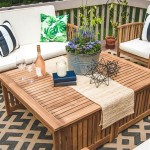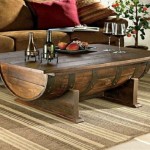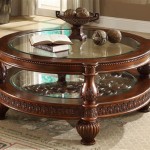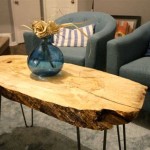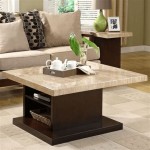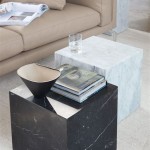Modern Table Centerpiece Ideas
Table centerpieces serve as focal points, enhancing the aesthetic appeal of dining spaces or event settings. Modern centerpiece designs emphasize simplicity, sophistication, and integration with contemporary design trends. The following explores various modern table centerpiece ideas suitable for different environments and occasions, examining their characteristics and potential impact.
Minimalist Geometric Designs
Minimalism remains a dominant force in modern design, and geometric shapes translate especially well into striking table centerpieces. These centerpieces often feature clean lines, simple forms, and a limited color palette, prioritizing geometry and negative space over ornate details. The use of materials like brushed metal, polished concrete, or clear glass further emphasizes the minimalist aesthetic.
One common approach involves arranging geometric sculptures of varying sizes on a table runner of neutral fabric. A series of spheres, cubes, or polyhedra crafted from metal or ceramic can create a visual rhythm across the table. The key is to avoid clutter and maintain ample space between objects, allowing each piece to be appreciated individually and as part of the overall composition.
Another option is to incorporate linear elements, such as sleek metal rods or minimalist candle holders. These can be arranged to form abstract patterns or used to elevate individual floral arrangements. When using flowers, opt for single-stem blooms or small, minimalist bouquets in simple vases. The focus should remain on the geometric forms and the interplay of light and shadow they create.
When selecting geometric designs, consideration should be given to the overall style of the room or event. A minimalist centerpiece is most effective in spaces with clean, uncluttered aesthetics. It can also serve as a counterpoint to more elaborate décor, providing a sense of balance and restraint.
Natural and Sustainable Elements
A growing awareness of environmental sustainability has influenced modern design, leading to the incorporation of natural and eco-friendly elements into table centerpieces. These designs draw inspiration from nature, utilizing organic materials and promoting environmentally conscious practices. The result is a centerpiece that is both aesthetically pleasing and reflective of contemporary values.
Driftwood, stones, and branches can be arranged to create sculptural centerpieces that evoke a sense of natural beauty. These materials can be sourced locally or ethically and often require minimal processing, reducing their environmental impact. The use of moss, succulents, and air plants further enhances the organic feel of these arrangements.
Sustainable materials like recycled glass, bamboo, and reclaimed wood are also frequently incorporated into modern centerpieces. These materials add texture and visual interest while promoting responsible consumption. Vases crafted from recycled glass, for example, can serve as elegant containers for floral arrangements or as standalone decorative objects.
The choice of flowers is also crucial in sustainable centerpieces. Opting for locally grown, seasonal blooms reduces the carbon footprint associated with transportation and supports local farmers. Using wildflowers or foraged foliage adds a natural, unstructured element to the arrangement. Furthermore, consider using potted plants instead of cut flowers, which can be replanted after the event.
The color palette for natural and sustainable centerpieces typically leans towards earthy tones, such as greens, browns, and creams. These colors complement the organic materials and create a soothing, harmonious atmosphere. Subtle pops of color can be introduced through the use of seasonal flowers or colorful stones.
Sculptural Floral Arrangements
While traditional floral arrangements often emphasize symmetry and formality, modern designs embrace asymmetry, texture, and unexpected combinations. Sculptural floral arrangements are characterized by their artistic form, innovative use of materials, and ability to create a visual statement. These centerpieces are often more akin to works of art than purely decorative objects.
The use of unconventional containers is a key feature of sculptural floral arrangements. Instead of traditional vases, designers may use repurposed objects, such as vintage teapots, ceramic bowls, or even abstract metal structures. The container itself becomes an integral part of the centerpiece, adding to its visual appeal and artistic expression.
The selection of flowers and foliage is also crucial. Modern arrangements often incorporate a mix of different textures, shapes, and colors. Bold, architectural flowers, such as proteas, orchids, and calla lilies, are frequently used to create strong focal points. These are often combined with softer, more delicate blooms, such as roses, peonies, and hydrangeas, to create a sense of balance and contrast.
The arrangement itself is typically asymmetrical and unstructured. Flowers and foliage are arranged in a way that emphasizes their natural forms and creates a sense of movement and dynamism. The use of negative space is also important, allowing individual elements to stand out and creating a sense of lightness and airiness.
Color palettes for sculptural floral arrangements can range from monochromatic to vibrant and eclectic. A monochromatic arrangement might feature different shades of the same color, creating a sense of depth and sophistication. A more vibrant arrangement might combine contrasting colors, such as red and green or blue and yellow, to create a sense of energy and excitement.
Illuminated Centerpieces
Adding light to a table centerpiece can transform it from a static display into a dynamic and engaging focal point. Illuminated centerpieces create a warm, inviting atmosphere and highlight the textures and colors of the surrounding décor. Modern illuminated centerpieces often incorporate LED lights, candles, or other light sources in innovative and subtle ways.
One approach involves integrating LED string lights into the centerpiece itself. These lights can be woven through floral arrangements, wrapped around branches, or concealed within glass containers. The soft, diffused light creates a magical and ethereal effect, highlighting the details of the centerpiece and casting a warm glow on the surrounding table.
Candles remain a classic choice for illuminated centerpieces, but modern designs often incorporate them in unexpected ways. Instead of traditional candlesticks, consider using floating candles in glass bowls or arranging candles of varying heights on a mirrored surface. The flickering candlelight adds a romantic and intimate atmosphere to the setting.
Another option is to use accent lighting to highlight the centerpiece from below. Small spotlights or up lighting fixtures can be positioned around the base of the centerpiece, casting dramatic shadows and emphasizing its sculptural form. This technique is particularly effective for centerpieces made from glass, crystal, or other translucent materials.
When using illuminated centerpieces, it is important to consider the overall lighting of the room or event. The centerpiece should complement the existing lighting scheme and create a cohesive and balanced atmosphere. Avoid using overly bright or harsh lighting, which can detract from the overall ambiance.
Thematic Centerpieces
Thematic centerpieces reflect a specific theme or concept, adding a layer of narrative and personality to the table setting. Modern thematic centerpieces often draw inspiration from art, culture, or personal interests, creating a unique and memorable experience for guests. These centerpieces require careful planning and attention to detail to ensure that the theme is effectively conveyed and that the overall aesthetic is cohesive.
One approach is to create a centerpiece that reflects the season or time of year. Autumnal centerpieces might feature pumpkins, gourds, and colorful leaves, while winter centerpieces might incorporate pinecones, berries, and frosted branches. Spring centerpieces might showcase blooming flowers, fresh greenery, and pastel colors. Summer centerpieces could include seashells, sand, and bright, vibrant hues.
Another option is to draw inspiration from a specific artistic movement or cultural tradition. A centerpiece inspired by abstract expressionism might feature bold colors, dynamic forms, and unconventional materials. A centerpiece inspired by Japanese minimalism might incorporate bamboo, stones, and carefully arranged floral elements.
The use of props and accessories is also crucial in thematic centerpieces. Vintage books, antique maps, or handcrafted figurines can add character and depth to the arrangement. The key is to select props that are relevant to the theme and that complement the overall aesthetic.
Color palettes for thematic centerpieces should be chosen to reflect the theme and create the desired mood. A centerpiece inspired by the ocean might feature blues, greens, and whites, while a centerpiece inspired by a tropical rainforest might incorporate vibrant greens, oranges, and yellows.
Interactive Centerpieces
Interactive centerpieces engage guests and encourage them to participate in the design. These centerpieces move beyond mere decoration and become a source of entertainment and conversation. Modern interactive centerpieces often incorporate elements that guests can manipulate, rearrange, or even add to, creating a dynamic and collaborative experience.
One approach is to create a centerpiece that incorporates building blocks or modular elements. Guests can use these elements to construct their own miniature sculptures or structures, adding their personal touch to the overall design. This type of centerpiece is particularly well-suited for informal gatherings or events where guests are encouraged to mingle and interact.
Another option is to create a centerpiece that incorporates living elements, such as herbs or succulents, that guests can pick and use. This type of centerpiece is both aesthetically pleasing and functional, allowing guests to enjoy the beauty of nature while also adding flavor to their food or drinks.
Interactive centerpieces can also incorporate technology. A centerpiece with a built-in projector could display images or videos, while a centerpiece with a sound system could play music or sound effects. These types of centerpieces can add a sense of novelty and excitement to the event.
When designing interactive centerpieces, it is important to consider the safety and comfort of guests. Ensure that all materials are non-toxic and that the centerpiece is stable and secure. Provide clear instructions on how to interact with the centerpiece, and offer assistance if needed.

Dining Room Table Centerpieces

Beautiful And Easy Dining Room Table Centerpiece Ideas Stonegable

Jsdpn Com Dining Room Centerpiece Table Centerpieces Decor

Dining Room Table Decor Ideas How To Decorate Your

I Love Lamp Elegant Dining Room Centerpiece Table Centerpieces

55 Everyday Dining Table Decor Ideas Craftionary

28 Stunning Dining Table Centrepieces Furniturebox

40 Glass Dining Room Tables To Revamp With From Rectangle Square Round Table Centerpieces

34 Vibrant Dining Table Centerpieces To Brighten Your Home

Kitchen Table Centerpiece Design Ideas Pictures
Related Posts

